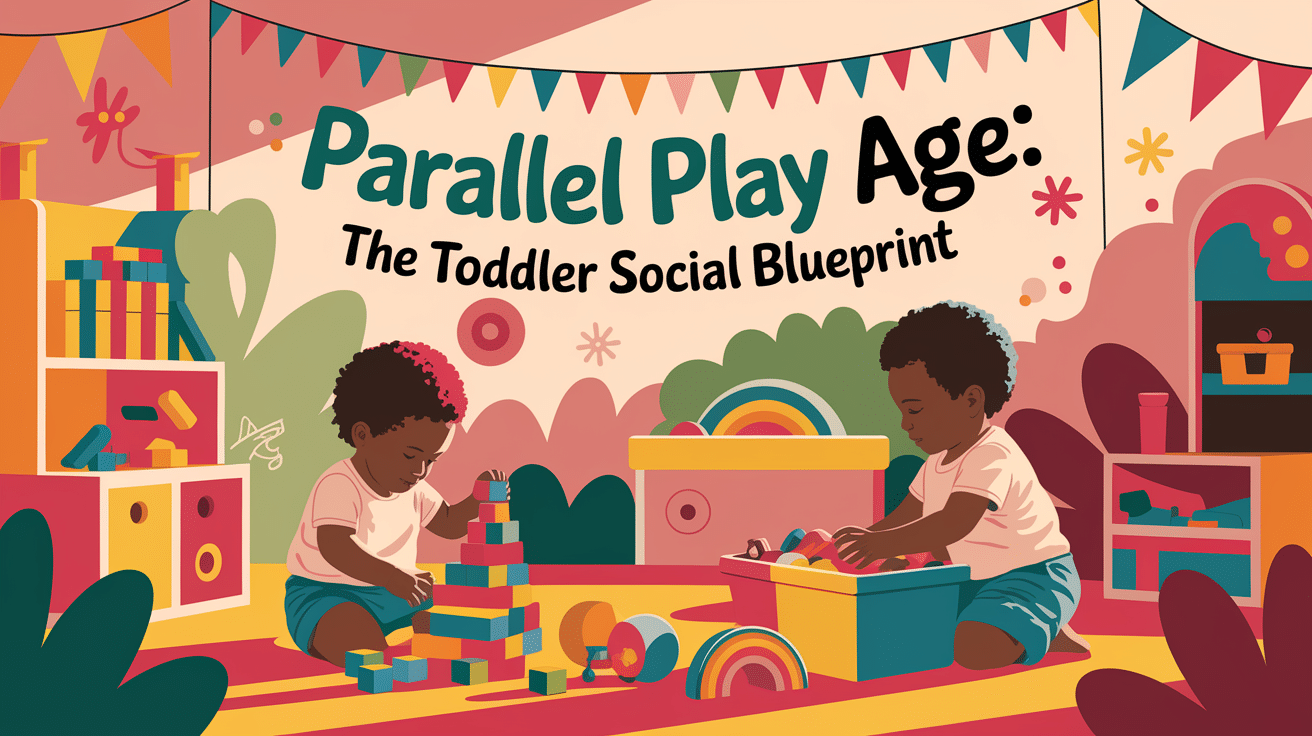
Have you ever noticed toddlers playing side by side in a sandbox, completely absorbed in their worlds while occasionally glancing at each other?
This isn’t failed social interaction—it’s parallel play, a crucial developmental milestone in which children play independently but in close proximity.
First identified by researcher Mildred Parten in the 1930s, parallel play serves as the middle step on a child’s journey from solitary to cooperative play.
It typically begins around 18 months and provides a safe space for children to observe, imitate, and develop social awareness without the pressure of direct interaction.
Interestingly, adults engage in parallel play too—think of people working on laptops at a coffee shop, together yet separate in their activities.
What Exactly Is Parallel Play?
Are you wondering about parallel play in your child’s development? This important milestone occurs when toddlers play side-by-side without directly interacting.
Have you noticed your little one playing near other children but not with them? That’s parallel play in action! It typically emerges around 18 months and continues until age 2-3.
During parallel play, children observe and imitate peers while maintaining their independent activities. This builds crucial social awareness and prepares them for cooperative play later.
Try creating parallel play opportunities at home or in playgroups. Offer duplicate toys and observe how your child engages.
Are you concerned about your toddler’s development? Remember that parallel play is a natural stepping stone toward more complex social interactions.
What parallel play behaviors have you noticed in your child?
The Stages of Play: From Solo to Social
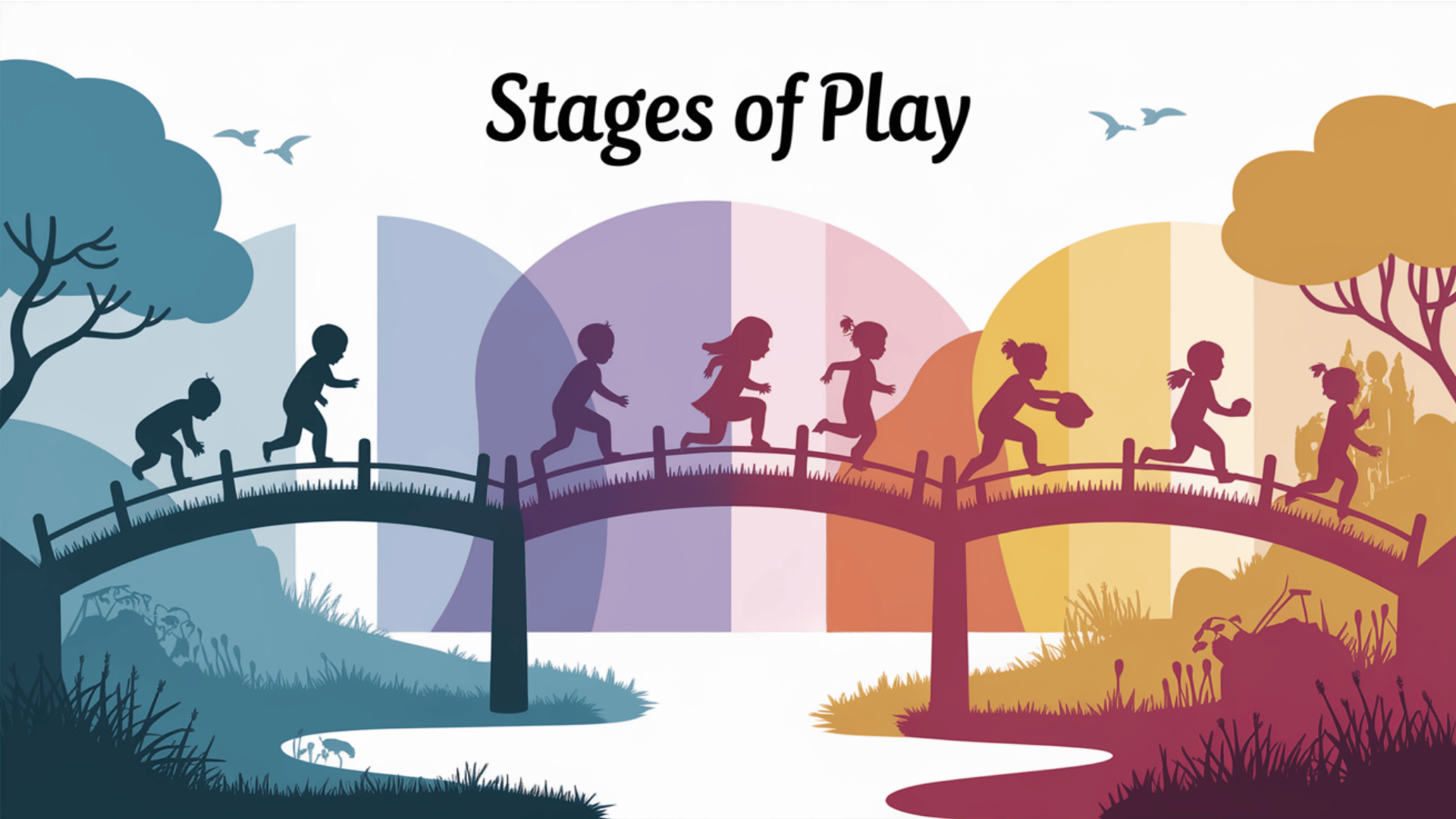
Children don’t just wake up one day knowing how to play in groups. They move through six stages as they grow:
- Unoccupied play: Babies move randomly, reading their bodies
- Solitary play: Playing completely alone
- Onlooker play: Watching others play but not joining in
- Parallel play: Playing beside others but not with them
- Associative play: Beginning to interact while playing
- Cooperative play: True teamwork and organized play
Researcher Mildred Parten first described these stages in the 1930s, and experts like Maria Montessori have shown how important each stage is for learning.
Think of parallel play as the middle step on a bridge. On one side is the world of playing alone, and on the other is the world of true social play. Children need to cross this bridge to develop healthy social skills.
Parallel Play vs Cooperative Play
| ASPECT | PARALLEL PLAY | COOPERATIVE PLAY |
|---|---|---|
| Definition | Children play side-by-side, engaging in independent activities while in close proximity. | Children engage actively with one another, working together to achieve a shared goal. |
| Social Interaction | Limited verbal interaction: children observe and occasionally mimic each other without full collaboration. | High level of interaction with communication, sharing ideas, and negotiating roles throughout the play. |
| Age Range | Typically observed in toddlers (around 18 months to 3 years). | More common among preschoolers and older children, as social skills mature. |
| Level of Collaboration | Minimal collaboration: Each child is focused on their play, even when in the same space. | Full collaboration: children share tasks, solve problems together, and coordinate their actions to achieve common objectives. |
| Goal Orientation | Focused on individual investigation and learning from peers through observation. | Driven by a shared purpose, often resulting in joint problem-solving and group creativity. |
| Examples | Two toddlers are building separate block towers side-by-side without attempting to merge their creations. | Children play a team-based game or build a structure together by combining blocks and materials for a unified outcome. |
Parallel play isn’t the same as cooperative play, where kids work together on a shared goal (like building a fort). It’s also different from associative play, where children interact more but still don’t have organized goals.
Pro Tip: Don’t rush your child to “graduate” from parallel play! This stage helps them learn to observe others, practice new skills through imitation, and develop self-control at their own pace.
What makes parallel play special is that it gives children a safe way to be social without the pressure of true interaction. It’s like having training wheels for friendship.
When Does Parallel Play Happen?
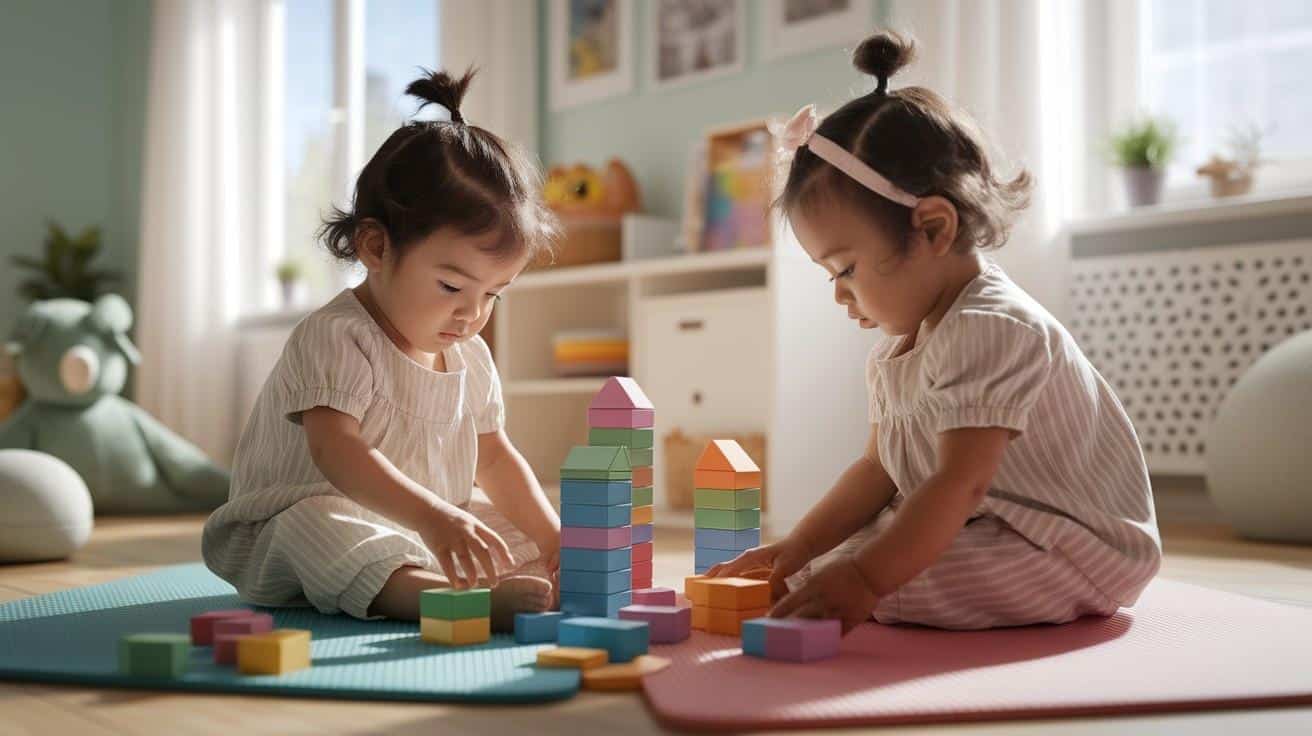
Most children start parallel play around 18 months to 2 years old. By age 3 or 4, many move toward more interactive play, but don’t worry if your child sticks with parallel play longer.
Every child develops at their speed. Some may stay in this stage longer, especially if they’re naturally shy or have less experience around other children.
Wait! Did you know parallel play sometimes comes back even for older children and adults? Have you ever sat at a coffee shop working on your laptop while others did the same? That’s a grown-up version of parallel play.
Why Parallel Play Matters?
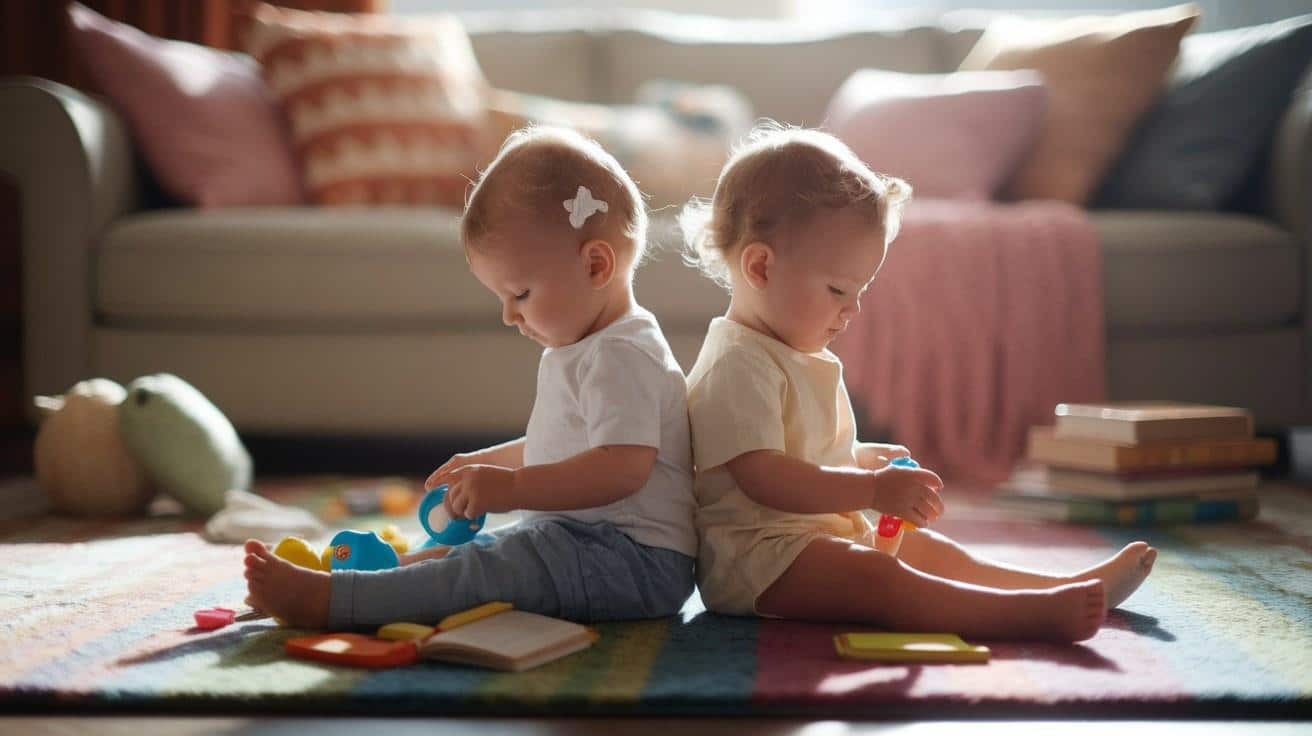
Parallel play delivers big benefits for kids:
Social benefits:
- Children learn to read facial expressions and body language
- They practice being around others without being overwhelmed
- They begin to understand personal space and boundaries
Brain benefits:
- They pick up new words by listening to others
- Problem-solving skills grow as they watch how others use toys
- Hand-eye coordination improves through mimicking others’ actions
Emotional benefits:
- Children build confidence in their abilities
- They learn to manage feelings when things don’t go as planned
- Independence grows as they make their own play choices
How to Encourage Parallel Play?
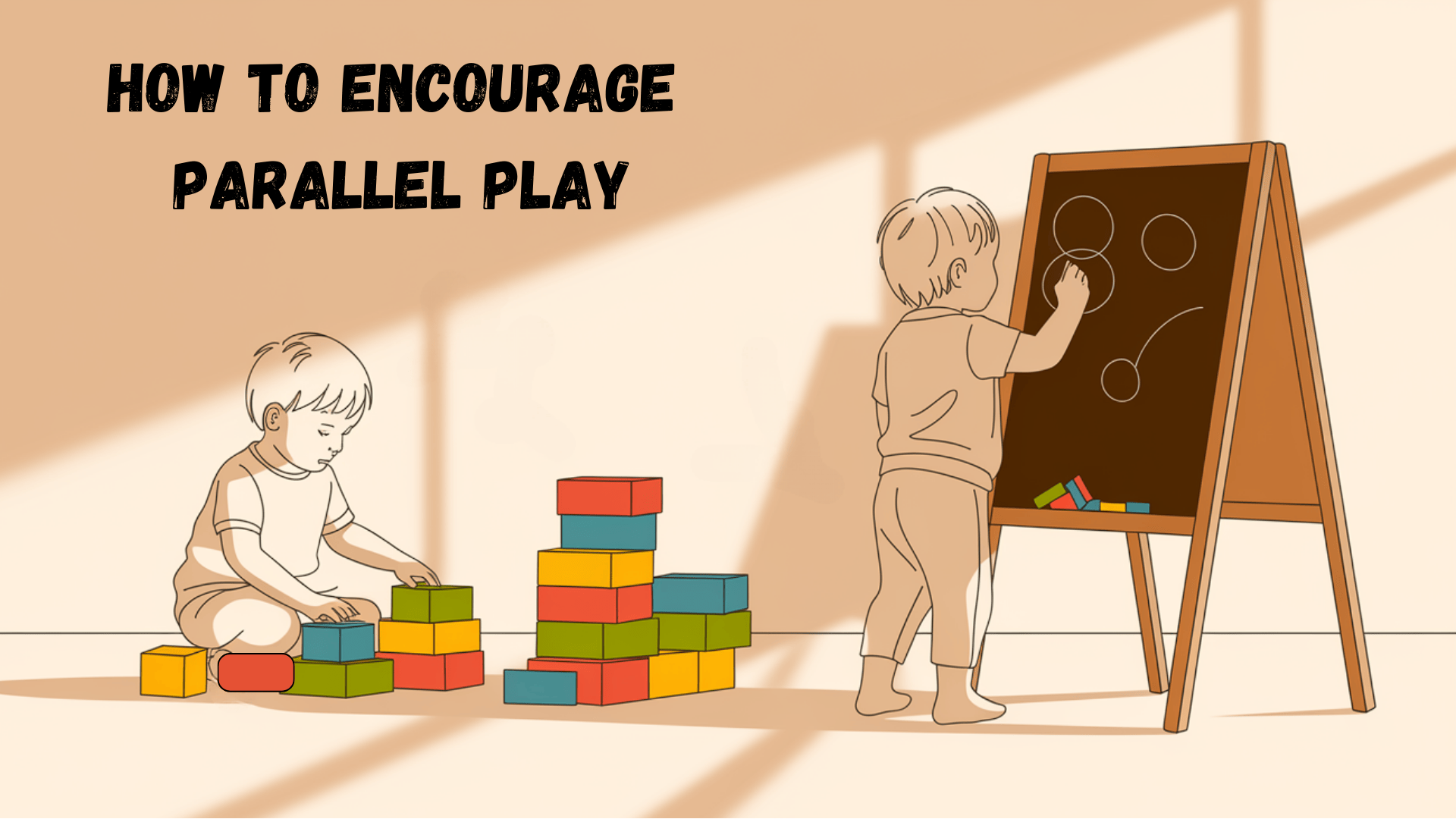
-
Create a shared play space: Set up an area with enough room for multiple kids, but place toys in a way that encourages interaction.
-
Use duplicate toys: Provide two of the most popular toys to reduce conflicts over favorites.
-
Keep playdates short and small: To avoid being overwhelmed, limit playdates to 45–60 minutes with 2–3 children.
-
Match energy levels: Choose playmates with similar energy and play styles when possible.
-
Guide gently through conflicts: Stay nearby to support but avoid jumping in too fast. Offer calm suggestions like, “There’s also a red crayon—would anyone like that one?”
Pro Tip: Rotate toys regularly to keep the play space fresh and exciting. Put some toys away for a few weeks, then bring them back. Children will approach familiar toys with new interest after a break.
Caution: Children with autism may prefer parallel play over interactive play, and that’s completely okay. Forcing interaction too soon can cause stress or overwhelm.
-
Parallel play can be a safe and meaningful way for autistic children to explore social settings.
-
Therapists often use this technique by mirroring a child’s play to build trust and connection gradually.
-
Avoid pressuring the child to engage—let them set the pace.
-
Support sensory needs by offering both noisy and quiet play zones, allowing kids to engage comfortably.
Fun Activities That Promote Parallel Play
Try these simple activities that naturally encourage parallel play:
- Set up easels side by side with paint and paper
- Create a sensory bin filled with rice, scoops, and small toys
- Build a reading corner where children can look at books near each other
- Arrange musical instruments for an impromptu (and probably noisy) jam session
- Place building blocks on a large mat where multiple children can build
Sometimes, the simplest things work best. Have you ever noticed how children love to play with cardboard boxes? Place a few different-sized boxes in a room and watch the parallel play unfold naturally.
Looking Forward
Today’s digital world creates new parallel play opportunities. Two children using tablets side by side are engaging in a modern version of parallel play. Just be sure to balance screen time with physical play.
Researchers continue to find new benefits of parallel play. Recent studies suggest it may help develop focus and attention skills that benefit children throughout their school years.
Next time you see toddlers playing side by side but not together, remember—they’re not just playing, they’re building essential life skills one block tower at a time.
If you’re interested in more informational content on mothers and babies, feel free to click here and research other blogs that you might enjoy.
